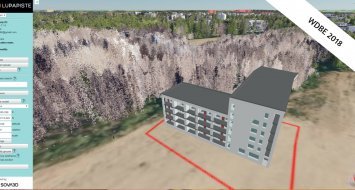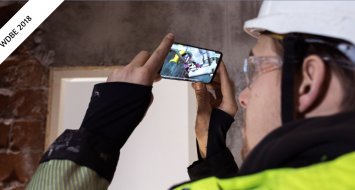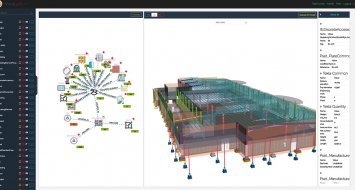
Join: Computer Science Meets Construction
ti elok. 07 10:15:00 2018
This text is provided by AE Partners
Increasingly, projects need to be optimized to create the most value for their clients and users. With the fragmented nature of project teams, decisions can be lost, communication sporadic, and information disjointed. In addition, the rapid pace of innovation means that it’s difficult – if not impossible – for architects and engineers to be aware of all the latest construction products and materials.
It is these problems that inspired the creation of Join. Join is a smart platform that helps project teams collaborate more efficiently and effectively, whether as part of a project optimization process or throughout the entire project lifecycle. The platform connects construction teams, pulls together different types of project information, and integrates manufacturing into construction.
Building Bridges to Manufacturing
One of the interesting features of Join is its ability to link construction professionals with manufacturer product specialists. Based on the project requirements, the platform will search for and suggest alternative manufactured products and materials. If any are suitable, the manufacturer can be contacted directly through Join for more information.
It does this by gathering project data from BIM models, drawings, specifications, and estimates to identify similar products and materials. The technology behind this is one developed by Join, which they refer to as the Building Query Language (BQL).
Meet the Co-Founder: Ye Wang
Join’s presentation at the WDBE will be focusing on this technology, and will be presented by Ye Wang, one of Join’s co-founders. Ye’s background is in mechanical CAD and 3D printing, having developed the first open platform for additive manufacturing at Autodesk.
Ye met Join’s CEO and co-founder, Andrew Zukoski, while they were both developing 3D printing design tools. Her mechanical background complemented Andrew’s engineering knowledge, where they both saw plenty of overlap and an opportunity to synthesize these two traditionally separate fields. The result is a fusion of architecture, manufacturing, and computer science.
Addressing the Productivity Gap
The goal was to help improve productivity in construction in an impactful way. “We are joining manufactured building products into this whole process. A lot of times, people talk about design, but the part we want to integrate is the off-the-shelf items,” says Ye. By doing this, construction professionals will have alternatives to choose from that they may not have otherwise been aware of.
“You come to project already knowing all the constraints and budget. During detailed design, you can’t map all these detailed products, or all the costs, and how these products might impact projects. We are trying to bridge this gap by integrating manufactured products into the design phase,” she explains.
The Join Process
The first step is sharing disjointed project information. “This information isn’t easily shared. People don’t know why decisions are made or when they are made. So, we created a collaborative platform to collect this knowledge, which connects to the specification and model and records these decisions and the reasons behind them,” explains Ye.
The next step is to get the knowledge that exists in peoples’ heads into the platform. “You can’t just change the ceiling height; if that decision is made, there are a lot of follow up steps and coordination with other teams,” she points out. “Some activities are pretty similar across projects, but it’s easy to miss some of these within the team. So, you need to capture this information.”
The third step is to integrate manufacturing into the process. “If you are building a curtain wall, for example, there are a lot of products that can fulfill the specification and requirements. And if there are any requirements that can be relaxed, there may be alternatives available to bring costs down,” added Ye.
Enter the Building Query Language
BQL assists by taking all the project information and using the specification to identify products under the same category. Join can search across multiple projects and find similar products that might satisfy the project requirements. “We saw an opportunity to develop a query language that is very scalable, fast, and easy to share across projects. There’s no need to design a new solution every time you start a new project,” she asserts.
BQL can also be used for other applications as well. “The query language allows very deep access to the model. You can write a query to check constructability, such as if the structural model is in sync with the elevations in the architectural model. On small projects you can check this visually, but with more complex projects it is difficult to tell, particularly with minor changes. This can be easily checked with a query language.”
What Will I Learn at WDBE?
Ye’s presentation at the WDBE is going to focus on how a query language can help the industry and give a sneak peek into how this technology is used within Join’s platform. To fit in with this year’s theme of ‘Cities as Disruption Platforms,’ she will be focusing on how to get useful data out of a large-scale BIM model – such as a city – in a structured way, as well as collaborating across many different domains with conflicting priorities.
Rakennustekniikka on RIL ry:n julkaisema lehti.
Suosituimmat

How BIM is Revolutionizing Building Control in Finland
KIRA-digi experimentation project has demonstrated that BIM can improve the building permi...

BIM Meets Reality on the Construction Site
Using augmented reality the 3D model and the physical room are brought together on the mob...


